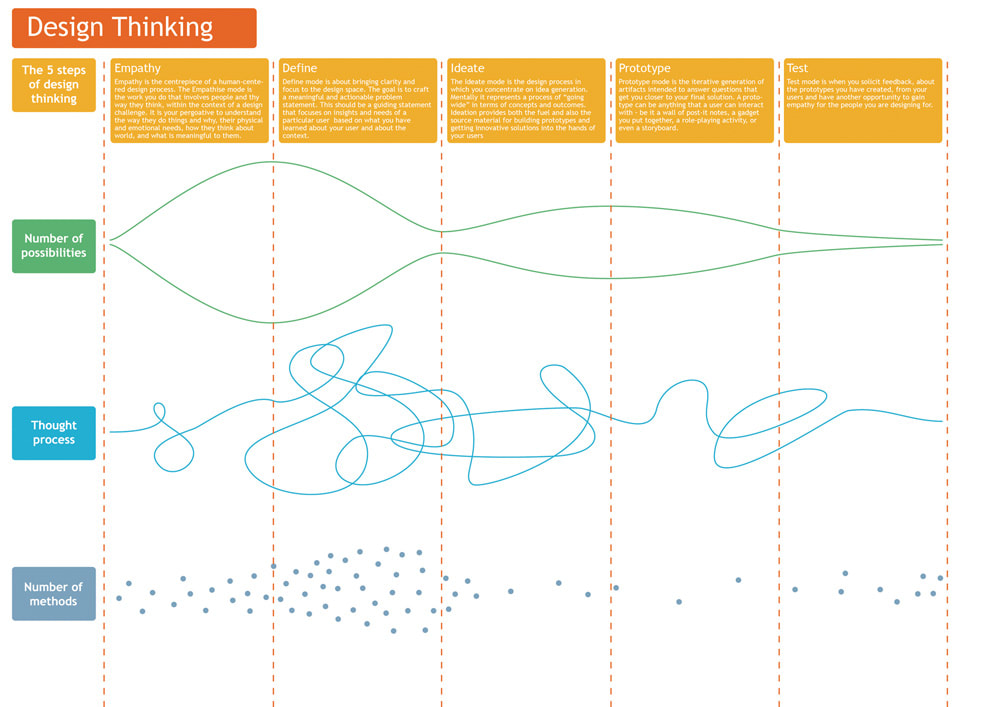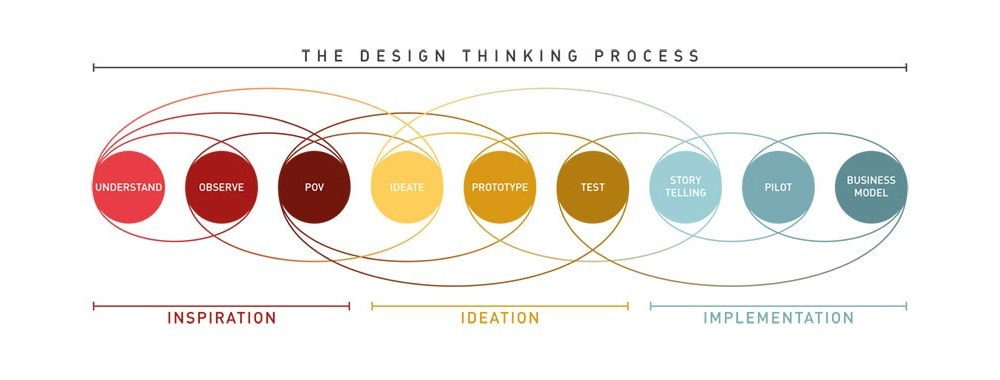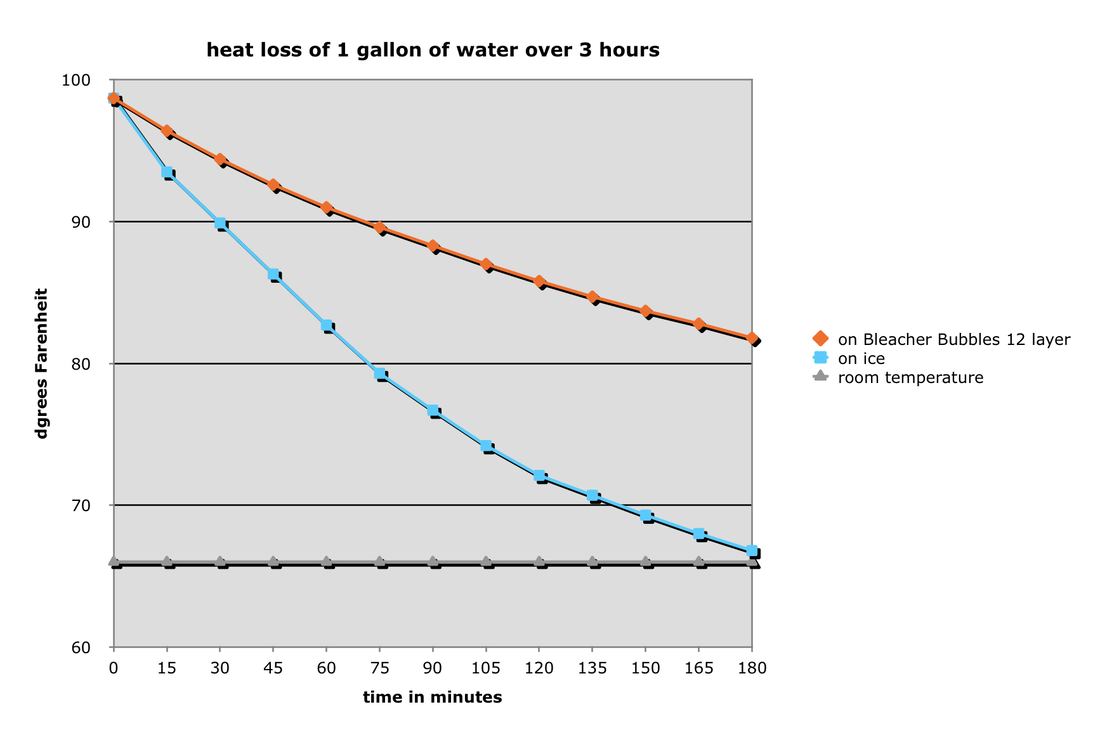DESIGN THINKING
"Design Thinking" is not a commonly-known field. I hadn't heard the term until recently, but discovered I had been studying and doing that kind of work on my own for many years. It's most often found in departments or consultancies charged with product development, business development, or innovation. There's a couple definitions below, and I wrote about it here.
"‘Design Thinking’ denotes the problem-solving approach which equips design and non-design students and professionals with ‘a methodology for producing reliably innovative results in any field’ (Miller, 2015). Designers’ skills and ways of thinking and reasoning have been enlarged and adapted for solving problems beyond design. These methods are now applied to address complex social, economic, health-related, and political problems.”
“Design Thinking helps us in the process of questioning: questioning the problem, questioning the assumptions, and questioning the implications. Design Thinking is extremely useful in tackling problems that are ill-defined or unknown, by re-framing the problem in human-centric ways, creating many ideas, and adopting a hands-on approach in prototyping and testing.”
“The Design Strategist is most active in the ‘fuzzy front-end’ of innovation projects, when things aren’t quite clear and people aren’t sure which way to head. They navigate these uncharted waters where no one really knows yet what the real problems and the right questions are.”
“A design strategist is most of all a translator. Design strategists can translate from user to business to design, and from design to business to user. In order to do that, they need diverse backgrounds and empathetic approaches to understand different perspectives and mindsets. They facilitate a guided transition from the problem space to the solution space. They gather and develop insights and convert them into useful requirements for innovative human-centered products, services, and business models.”
There are many different models of design thinking processes, but no "standard" one. This can make it more difficult to explain, but I offer some visuals to help. I didn't make these images. I found some here.
The essential steps of Design Thinking are 1) understanding a user's true needs, then 2) developing multiple solutions that 3) can be quickly tested to see which (if any) actually meet those needs, followed by 4) learning, revising and repeating until you are ready to ship your solution. Bonus points if you are working to serve a population whose life would be significantly improved by your efforts.
I have a degree in visual communication design, but I'm personally wired to approach problems from a design thinking mindset. My curiosity and passion for this work has driven me to study psychology, idea generation, process design, value proposition design, human-centered design, visualization methods, and problem solving techniques. I love to help individuals and companies reframe, visualize, and think through tricky problems to uncover overlooked options. I then help prototype and test solutions we can develop and bring to the world.
Here's some examples:
I have a degree in visual communication design, but I'm personally wired to approach problems from a design thinking mindset. My curiosity and passion for this work has driven me to study psychology, idea generation, process design, value proposition design, human-centered design, visualization methods, and problem solving techniques. I love to help individuals and companies reframe, visualize, and think through tricky problems to uncover overlooked options. I then help prototype and test solutions we can develop and bring to the world.
Here's some examples:
Think Inside The Box
|
CHALLENGE: As a creative manager, we were often asked to "think outside the box". However, when we developed solutions, they were often deemed "too creative". How could we help clients define problem parameters that enabled them to get the most creative work out of the team?
MY INSIGHT: "All solutions (creative or not) are actually 'inside the box', where the box indicates the limitations of the problem. We need a tool to help people build the box together so they agree on the limits and therefore what is considered a viable solution." ACTION: We developed a 4-step process - Build, Expand, Think, Compare. One of the key discoveries was that as the box became clearer, it actually got larger. That meant that the creative space improved with clearer restatements of the problem. "Do you want a canoe, or just to get across the river?" We created tools, a workshop, and even drafted an outline for a book. RESULT: I developed this over many lunches with Todd Theodore when we both worked at Nationwide. We ended up finding new jobs at about the same time, and our side project got shelved. Todd went on to head up Marketing and Communications at Battelle. Smart guy! This also turned out to have significant similarities to the Design Thinking processes that IDEO and Google would develop a few years later. I still think we were onto something. |
Expectation Abacus
|
CHALLENGE: Capturing the hard specs of a design job are pretty fast and easy - size, colors, material, desired due date. How can you quickly capture the soft specs, like how much creative effort, or how critical is the deadline, or how much do you want to be involved in the process?
MY INSIGHT: "There are job/problem parameters that exist but that are rarely captured ahead of time. They eventually get clarified, but usually after an unspoken line is crossed. Also, circling items on a form is much faster than writing." ACTION: I used the concept of an abacus to design a model with five project parameters. It was easy to ask a job requestor to "make a bead" on each rung of the abacus to explain where their project fell. For example, is the deadline event-driven, important but negotiable, or earliest convenience? RESULT: The job request process became fast and easy. This was part of a form stapled to the outside of every job folder. Our graphics department averaged 3.4 in Client Satisfaction and 3.9 in Quality, against an overall office average of 3.1 (out of 4). |
Idea Grid
|
CHALLENGE: Telling people to "think creatively" is not very helpful. How can you help trigger creative thinking, especially in people who don't think they are creative?
MY INSIGHT: "The essence of creativity is connecting two existing things that haven't been connected before. Verbs can trigger useful creative insights. There are nine types of magic effects, and they form an interesting set of action words because they imply change. Putting them into grid would be a good way to force connections." ACTION: I build a grid that had the nine magic effects across the top. Down the side, you would write 10+/- aspects of your problem - "acquisition", "engagement", "conversion", etc. Then you randomly pick a square in the middle, and try to connect the magic effect for that column with the problem aspect for that row. Escape + Acquisition = no interest for sign-up, or auto-enroll. RESULT: I facilitated an hour-long brainstorming session using this tool. At the start of the meeting, our Credit team self-identified as low creative, or at least "out of ideas". 50 minutes later, they had generated 90 ideas. Also, this was using only 23% of the fields in the grid. That's all we had time to do, but they had more than enough ideas to go forward. |
Bleacher Bubbles
|
CHALLENGE: My fellow fans and I were freezing on the bleachers watching a high school football game. It made a fun time into a (mostly) miserable time.
MY INSIGHT: "There is no cold, only heat moving from one thing to another until they are the same temperature. Right now it's moving out of our bodies and into the metal bleachers until they are warmed up. This is a losing battle. Also, contact heat loss from us touching the bleachers is much more intense than radiant and convective heat loss from the cold air. Even the people wrapped in blankets are freezing. We need some insulation between us and the bleachers. Air makes good insulation. I wonder if bubble wrap would work?" ACTION: I tested 12 layers of bubble wrap as an insulator by sitting plastic gallons of water on blocks of ice, and measuring the temperature every 15 minutes for 3 hours. The bubble wrap cut the heat loss in half. I searched for bubblewrap as human insulator. The only instance I could find was for transporting premature babies. I contacted a physicist to confirm my theories were correct. I then made several prototypes to find a folding and taping method that made a 12x18 cushion. RESULT: I made hundreds of Bleacher Bubbles by hand, and sold them at ice rinks. I donated dozens for fans at a Habitat for Humanity charity hockey game. I then identified the humanitarian use, and submitted the idea to Google's 10x100 contest. It's an effective insulator that warms up in a few seconds by capturing body heat in each of the 10,000 closed-cell bubbles. It's waterproof, bug proof, easily supports bodyweight without popping, and it's made from a material most of us throw away. |
Columbus Marathon
|
CHALLENGE: I was a Communication Consultant for Nationwide. As a primary corporate sponsor of the Columbus Marathon, I was assigned to help the planning committee increase participation and improve the registration experience for the 25th anniversary. How can you get more people to run a marathon?
MY INSIGHT: "People run marathons for different reasons. Expanding on the different categories of runners could reveal different paths to our goals." ACTION: I helped the team identify different groups and their mindsets. We uncovered potential sources of growth in people who could run a marathon but who didn't think they could, as well as people who might run but didn't consider themselves runners. I also recommended the registration page and check-in experience be tailored for each group. For example, seasoned runners had a streamlined experience, and first-timers were given more guidance and training resources. RESULT: Participation increased 18% from the previous year. The planning team was very pleased with both the process and the results. “Your insights, experience, enthusiasm and questions have contributed greatly to guiding and directing the work of the committee in a very positive way.” Bill Burns, Senior VP, Marketing | Greater Columbus Chamber of Commerce “It was a committee effort, but we all came to rely on Scott’s exceptional brainstorming and creative abilities...he really helped keep us on track throughout the process and his input was critical to the end result (and we’ve been getting rave reviews on it!).” Sarah Irvin, APR, Public Relations Director | Promotions One, Columbus, OH |
Swim Lane diagrams
|
CHALLENGE: Analyze the Image Management Process for a marketing department. How can we capture the process in a way that makes it easier to find inefficiencies and ideas for improvement?
MY INSIGHT: "Our current process is more complicated than most people realize. Writing it out with paragraphs and bullets on several pages is not helping. We need to find a better way to visualize it so that people can see the complexity but in a way that helps instead of overwhelms." ACTION: I found the Periodic Table of Visualization Methods, and started digging. The Swim Lane diagram seemed like the right approach. I facilitated a meeting where we constructed the diagram with Post-it notes. When I redrew it, I added the method of handoff for how information or items actually traveled from one person to the next. RESULT: The final product showed the true complexity of the system, but was actually pretty easy to follow. Once we were able to see the interrelationship of all the steps, we were able to make key changes that saved several days in the cycle. This diagram was also useful later as we reevaluated roles in the department. I also made one-page instructions for future swim lanes. |
The Extraordinaires Design Studio Pro
|
I didn't make this wonderful thing, but in 2015 it was the only thing I asked my wife to buy me for Christmas. It's a toy/game/activity that develops a user-centered design mindset. It has a 3-step development process of Research > Design > Improve, and it focuses on empathy and user needs. You create inventive products for imaginary characters. Fun, right?!?
Well for me, this practically leaped off the shelf. I saw it and intuitively knew exactly what it was and what it was for, and I wanted it. I couldn't wait to play, and then to show others. Little did I know that it was giving me precious clues as to what I should really be doing professionally. I recently re-read the entire 120 page book, and while it mentions things like user-centered design, experience design, user requirements, empathy, accessibility, and product lifecycle, nowhere does it mention Design Thinking or Design Strategy. No matter – it oozes that idea. Here's the creators explaining how it works. I've had tons of fun playing with this toolkit myself. I've also guided a few kids, my daughter's engineering sorority, and a curious group of co-workers through the thinking fun. I think the pro sets are sold out now, so I treasure mine. |
















